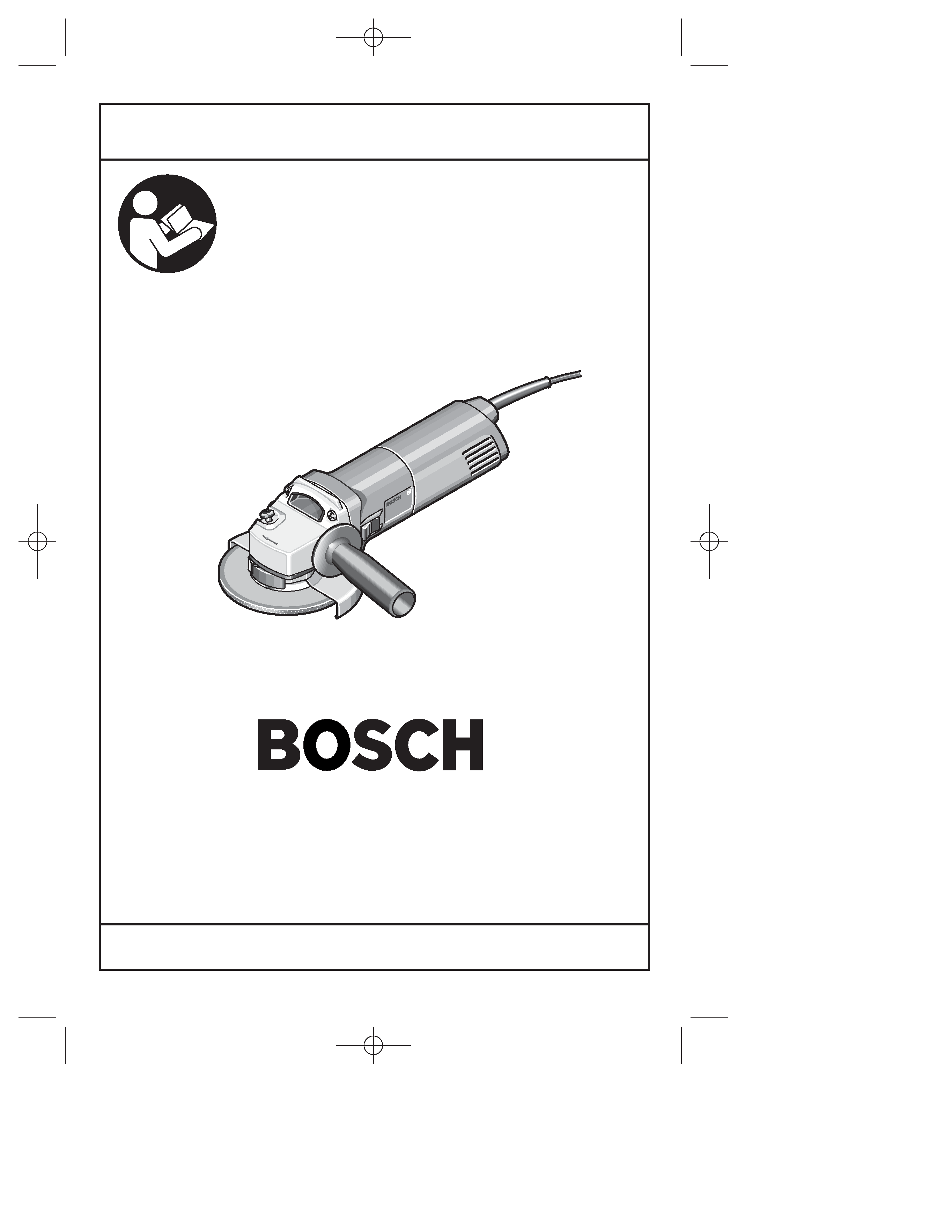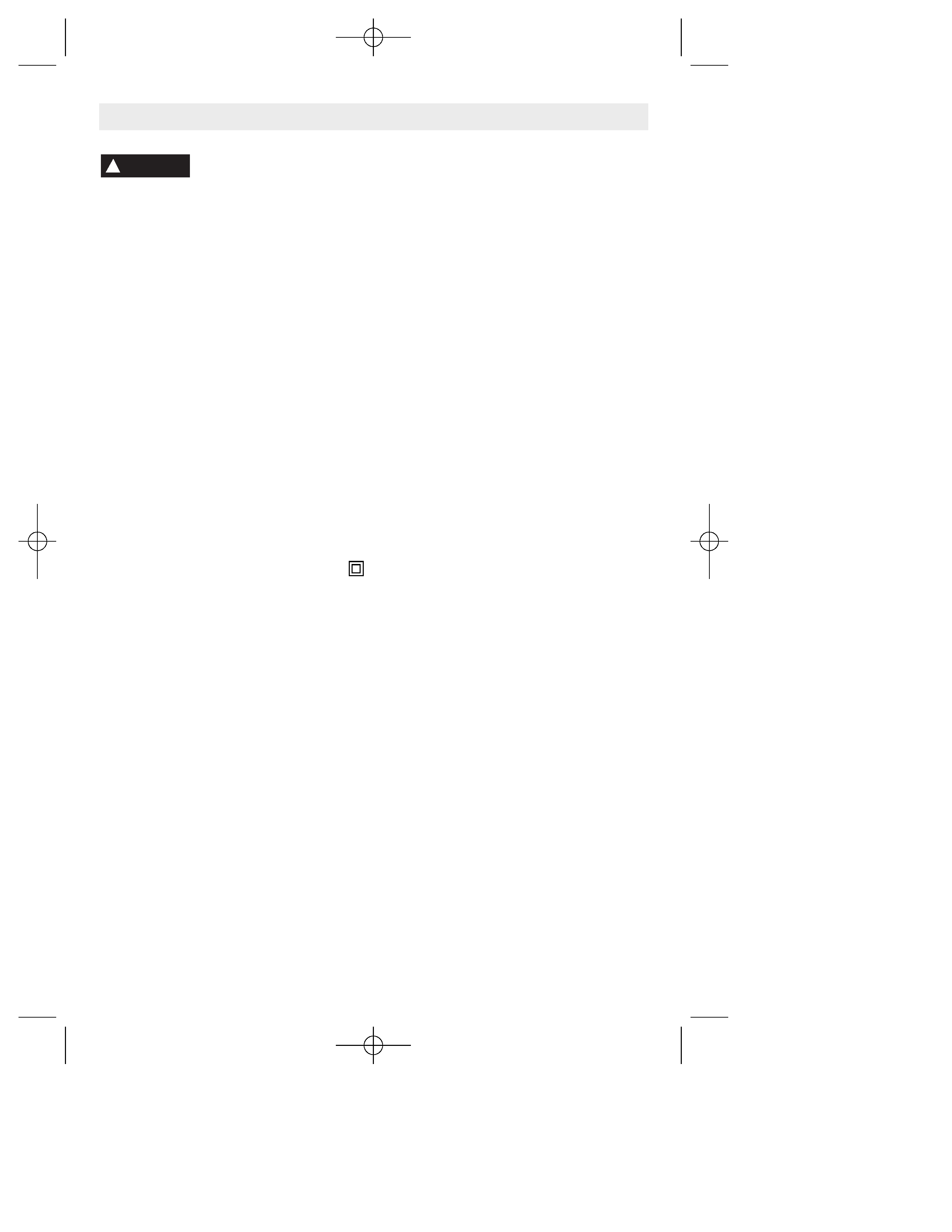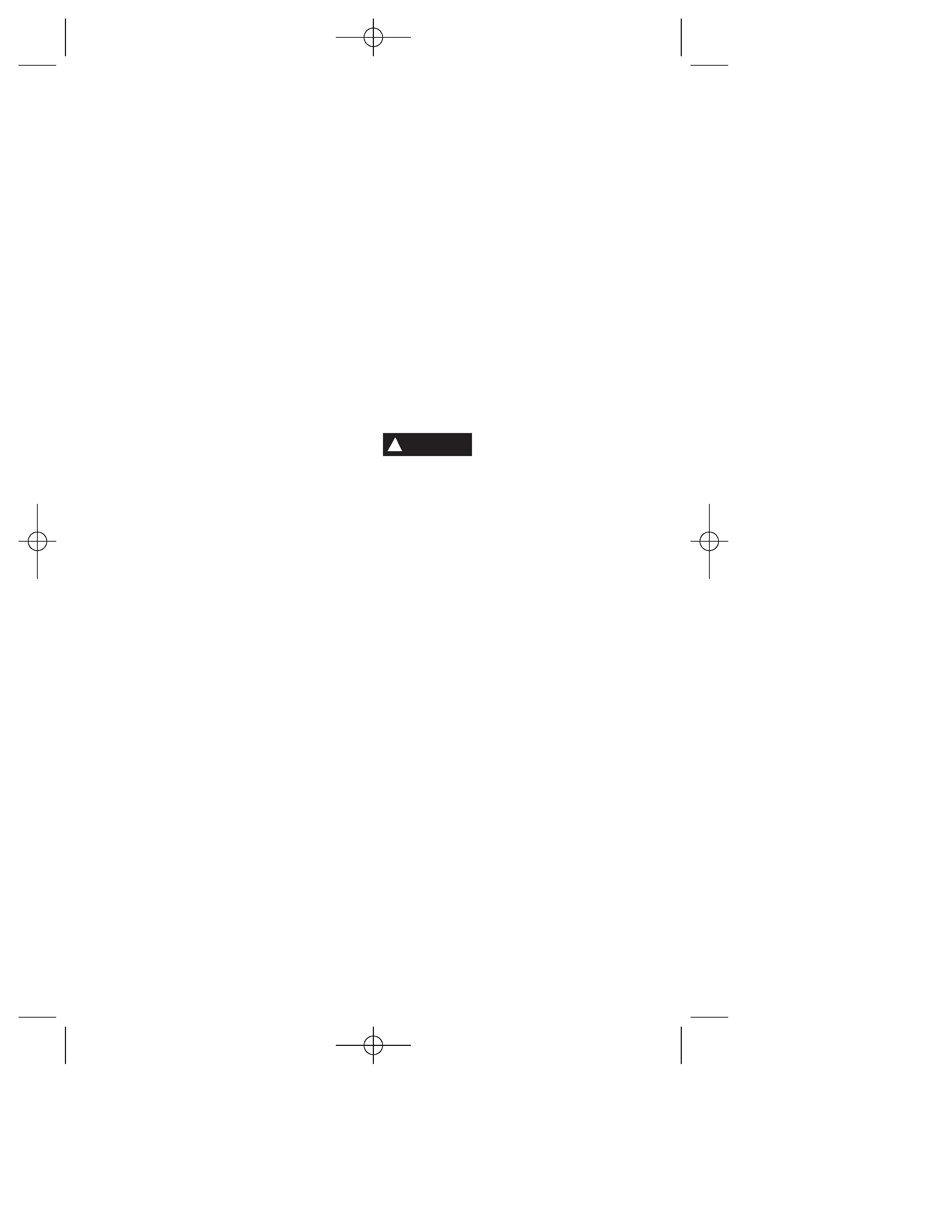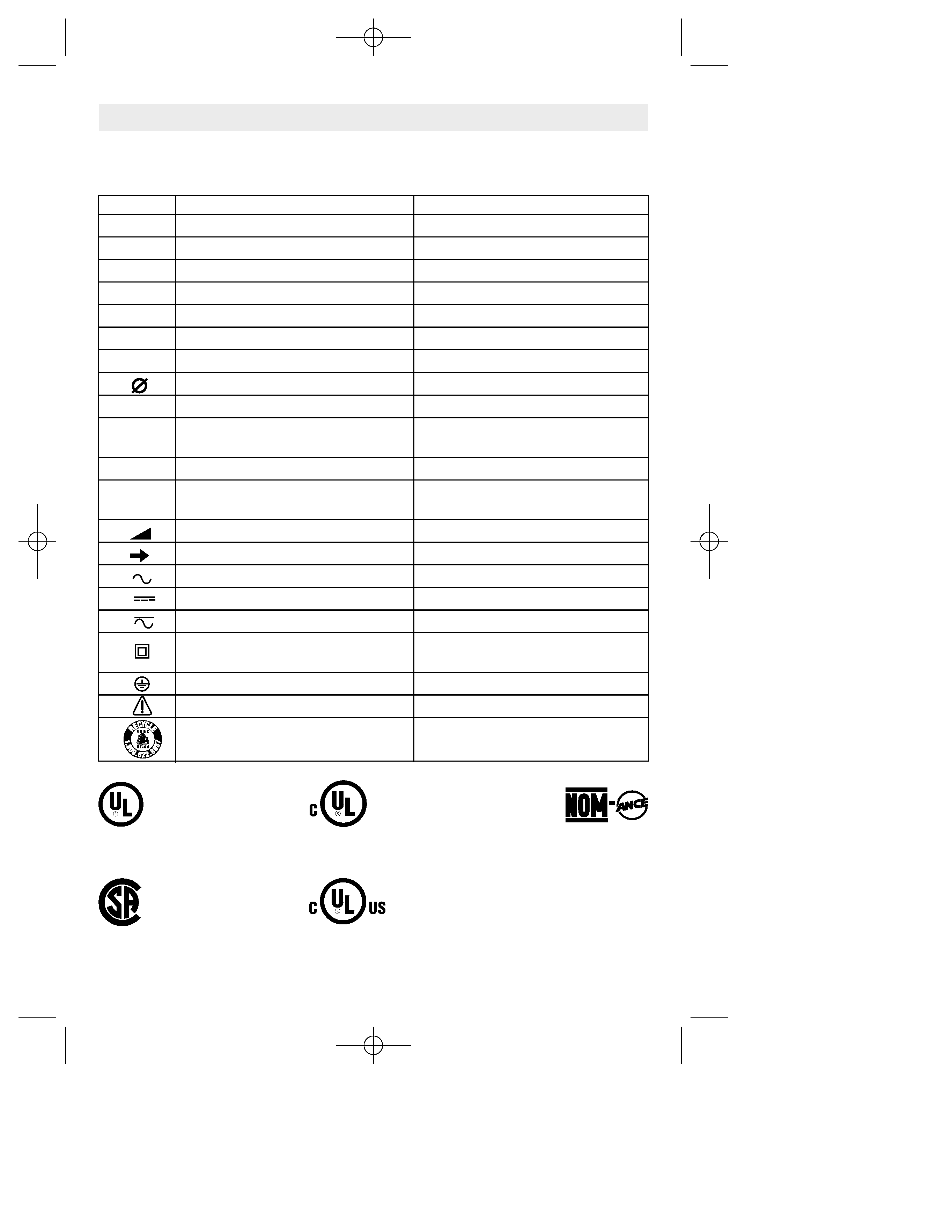
Operating/Safety Instructions
Consignes de fonctionnement/sécurité
Instrucciones de funcionamiento
y seguridad
1700
1701
1703EVS
IMPORTANT:
IMPORTANT :
IMPORTANTE:
Read Before Using
Lire avant usage
Leer antes de usar
For English
Parlez-vous français?
¿Habla español?
See page 2
Voir page 13
Ver página 24
Consumer Information
Renseignement des consommateurs
Información para el consumidor
Toll Free Number:
Appel gratuit :
Número de teléfono gratuito:
1-877-BOSCH99 (1-877-267-2499) http://www.boschtools.com
BM 1609929C33 10/03
10/28/03
2:49 PM
Page 1

Read and understand all instructions. Failure to follow all instructions
listed below, may result in electric shock, fire and/or serious personal injury.
SAVE THESE INSTRUCTIONS
-2-
Work Area
Keep your work area clean and well lit.
Cluttered benches and dark areas invite
accidents.
Do not operate power tools in explosive
atmospheres, such as in the presence of
flammable liquids, gases, or dust. Power
tools create sparks which may ignite the dust
or fumes.
Keep by-standers, children, and visitors
away while operating a power tool.
Distractions can cause you to lose control.
Electrical Safety
Double Insulated tools are equipped with a
polarized plug (one blade is wider than the
other.) This plug will fit in a polarized outlet
only one way. If the plug does not fit fully in
the outlet, reverse the plug. If it still does
not fit, contact a qualified electrician to
install a polarized outlet. Do not change
the plug in any way. Double Insulation
eliminates the need for the three wire
grounded power cord and grounded power
supply system.
Before plugging in the tool, be
certain the outlet voltage supplied is within the
voltage marked on the nameplate. Do not use
"AC only" rated tools with a DC power supply.
Avoid body contact with grounded surfaces
such as pipes, radiators, ranges and
refrigerators. There is an increased risk of
electric shock if your body is grounded. If
operating the power tool in damp locations is
unavoidable, a Ground Fault Circuit Interrupter
must be used to supply the power to your
tool. Electrician's rubber gloves and footwear
will further enhance your personal safety.
Don't expose power tools to rain or wet
conditions. Water entering a power tool will
increase the risk of electric shock.
Do not abuse the cord. Never use the cord
to carry the tools or pull the plug from an
outlet. Keep cord away from heat, oil, sharp
edges or moving parts. Replace damaged
cords immediately. Damaged cords increase
the risk of electric shock.
When operating a power tool outside, use
an outdoor extension cord marked "W-A"
or "W." These cords are rated for outdoor use
and reduce the risk of electric shock. Refer to
"Recommended sizes of Extension Cords" in
the Accessory section of this manual.
Personal Safety
Stay alert, watch what you are doing and
use common sense when operating a
power tool. Do not use tool while tired or
under the influence of drugs, alcohol, or
medication. A moment of inattention while
operating power tools may result in serious
personal injury.
Dress properly. Do not wear loose clothing
or jewelry. Contain long hair. Keep your
hair, clothing, and gloves away from
moving parts. Loose clothes, jewelry, or
long hair can be caught in moving parts.
Keep handles dry, clean and free from oil and
grease.
Avoid accidental starting. Be sure switch is
"OFF" before plugging in. Carrying tools with
your finger on the switch or plugging in tools
that have the switch "ON" invites accidents.
Remove adjusting keys or wrenches before
turning the tool "ON". A wrench or a key that
is left attached to a rotating part of the tool
may result in personal injury.
Do not overreach. Keep proper footing and
balance at all times. Proper footing and
balance enables better control of the tool in
unexpected situations.
Use safety equipment. Always wear eye
protection. Dust mask, non-skid safety
shoes, hard hat, or hearing protection must be
used for appropriate conditions.
Tool Use and Care
Use clamps or other practical way to
secure and support the workpiece to a
! WARNING
Power Tool Safety Rules
BM 1609929C33 10/03
10/28/03
2:49 PM
Page 2

-3-
Angle Grinder Safety Rules
stable platform. Holding the work by hand or
against your body is unstable and may lead to
loss of control.
Do not force tool. Use the correct tool for
your application. The correct tool will do the
job better and safer at the rate for which it is
designed.
Do not use tool if switch does not turn it
"ON" or "OFF". Any tool that cannot be
controlled with the switch is dangerous and
must be repaired.
Disconnect the plug from the power source
before making any adjustments, changing
accessories, or storing the tool. Such
preventive safety measures reduce the risk of
starting the tool accidentally.
Store idle tools out of reach of children and
other untrained persons. Tools are
dangerous in the hands of untrained users.
Maintain tools with care. Keep cutting tools
sharp and clean. Properly maintained tools,
with sharp cutting edges are less likely to bind
and are easier to control. Any alteration or
modification is a misuse and may result in a
dangerous condition.
Check for misalignment or binding of
moving parts, breakage of parts, and any
other condition that may affect the tools
operation. If damaged, have the tool
serviced before using. Many accidents are
caused by poorly maintained tools. Develop a
periodic maintenance schedule for your tool.
Use only accessories that are recom-
mended by the manufacturer for your
model. Accessories that may be suitable for
one tool, may become hazardous when used
on another tool.
Service
Tool service must be performed only by
qualified repair personnel. Service or
maintenance performed by unqualified
personnel could result in a risk of injury. For
example: internal wires may be misplaced or
pinched, safety guard return springs may be
improperly mounted.
When servicing a tool, use only identical
replacement parts. Follow instructions in
the Maintenance section of this manual.
Use of unauthorized parts or failure to follow
Maintenance Instructions may create a risk of
electric shock or injury. Certain cleaning
agents such as gasoline, carbon tetrachloride,
ammonia, etc. may damage plastic parts.
Always use proper guard with grinding
wheel. A guard protects operator from
broken wheel fragments. When using
grinding wheel attachments, the guard must
always be attached to the tool and
positioned for maximum safety, so the least
amount of wheel is exposed from the side
the tool is being operated.
Accessories must be rated for at least the
speed recommended on the tool warning
label. Wheels and other accessories running
over rated speed can fly apart and cause
injury. Grinding wheels or any other
accessory must have a maximum safe
operating speed greater than the "no load
RPM" marked on the tool's nameplate.
Hold tool by insulated gripping surfaces
when performing an operation where the
cutting tools may contact hidden wiring
or its own cord. Contact with a "live" wire
will make exposed metal parts of the tool
"live" and shock the operator.
Always use auxiliary handle for maximum
control over torque reaction or kick-back.
Operation of the grinder without the side
handle could cause loss of control of the
grinder, resulting in possible serious
personal injury.
Before using a grinder or installing a new
wheel, inspect the grinding wheel for
chips and cracks. Remove bad wheels
immediately. Run the tool at no load for
one minute, holding the tool in the
direction away from people. Wheels with
flaws will normally break apart during this
time.
Carefully handle both the tool and
individual grinding wheels to avoid
chipping or cracking. Install a new wheel
if tool is dropped while grinding. Do not
BM 1609929C33 10/03
10/28/03
2:49 PM
Page 3

use a wheel that may be damaged.
Fragments from a wheel that bursts during
operation will fly away at great velocity
possibly striking you or bystanders.
Do not use grinding wheel that is larger
than the maximum recommended size for
your tool, or worn down damaged wheels
from larger grinders. Wheels intended for
large angle sander/grinders are not suitable
for the high speed of a small angle
sander/grinder, these wheels may easily
burst and the fragments strike you or
bystanders.
Do not use depressed hub grinding
wheels for cut-off operations. Depressed
hub wheels or type 27 wheels are not
intended for side loading and may shatter
under overload.
Do not use this tool with "Woodcarving"
blade. Such blades create frequent kick-
back and loss of control.
Wear proper apparel while using a
sander/grinder. Face shield or at least
safety goggles, dust mask, leather gloves
and shop apron capable of stopping small
wheel or workpiece fragments.
Position the cord clear of the spinning
grinding wheel or any other sanding
accessory. Do not wrap the cord around
your arm or wrist. If you lose control and
have the cord wrapped around your arm or
wrist it may entrap you and cause injury.
Avoid bouncing and snagging the wheel,
especially when working corners, sharp
edges etc. This can cause loss of control
and kick-back.
Regularily clean the tool's air vents by
compressed air. Excessive accumulation of
powdered metal inside the motor housing
may cause electrical failures.
Do not grind or sand near flammable
materials. Sparks from the wheel could
ignite these materials.
This tool can be converted to a sander.
When grinding is resumed the proper
guard and wheel flanges MUST be
reinstalled before proceeding with
grinding. The guard must always be
attached to the tool and positioned for
maximum safety, so the least amount of
wheel is exposed from the side the tool is
being operated. The grinding wheel guard
cannot be used for most sanding operations
or for wire brushing.
When sanding, do not use oversized
sanding disc. Larger sanding disc will
extend beyond the sanding pad causing
snagging, tearing of the disc or kick-back.
Extra paper extending beyond the sanding
pad can also cause serious lacerations.
Some dust created by
power sanding, sawing,
grinding, drilling, and other construction
activities contains chemicals known to
cause cancer, birth defects or other
reproductive harm. Some examples of
these chemicals are:
· Lead from lead-based paints,
· Crystalline silica from bricks and cement
and other masonry products, and
· Arsenic and chromium from chemically-
treated lumber.
Your risk from these exposures varies,
depending on how often you do this type of
work. To reduce your exposure to these
chemicals: work in a well ventilated area,
and work with approved safety equipment,
such as those dust masks that are specially
designed to filter out microscopic particles.
-4-
! WARNING
BM 1609929C33 10/03
10/28/03
2:49 PM
Page 4

-5-
I
MPORTANT: Some of the following symbols may be used on your tool. Please study them
and learn their meaning. Proper interpretation of these symbols will allow you to operate the
tool better and safer.
Symbol
Name
Designation/Explanation
V
Volts
Voltage (potential)
A
Amperes
Current
Hz
Hertz
Frequency (cycles per second)
W
Watt
Power
kg
Kilograms
Weight
min
Minutes
Time
s
Seconds
Time
Diameter
Size of drill bits, grinding wheels, etc.
n
0
No load speed
Rotational speed, at no load
.../min
Revolutions or reciprocation per minute Revolutions, strokes, surface speed,
orbits etc. per minute
0
Off position
Zero speed, zero torque...
1, 2, 3, ...
Selector settings
Speed, torque or position settings.
I, II, III,
Higher number means greater speed
Infinitely variable selector with off
Speed is increasing from 0 setting
Arrow
Action in the direction of arrow
Alternating current
Type or a characteristic of current
Direct current
Type or a characteristic of current
Alternating or direct current
Type or a characteristic of current
Class II construction
Designates Double Insulated
Construction tools.
Earthing terminal
Grounding terminal
Warning symbol
Alerts user to warning messages
Ni-Cad RBRC seal
Designates Ni-Cad battery recycling
program
Symbols
0
This symbol designates
that this tool is listed by
Underwriters Laboratories.
This symbol designates
that this tool is listed by
the Canadian Standards
Association.
This symbol designates
that this tool is listed to
Canadian Standards by
Underwriters Laboratories.
T
his symbol
designates
that
this tool
complies
to NOM
Mexican
Standards.
This symbol designates
that this tool is listed by
Underwriters Laboratories,
and listed to Canadian
Standards by Underwriters
Laboratories.
BM 1609929C33 10/03
10/28/03
2:49 PM
Page 5
